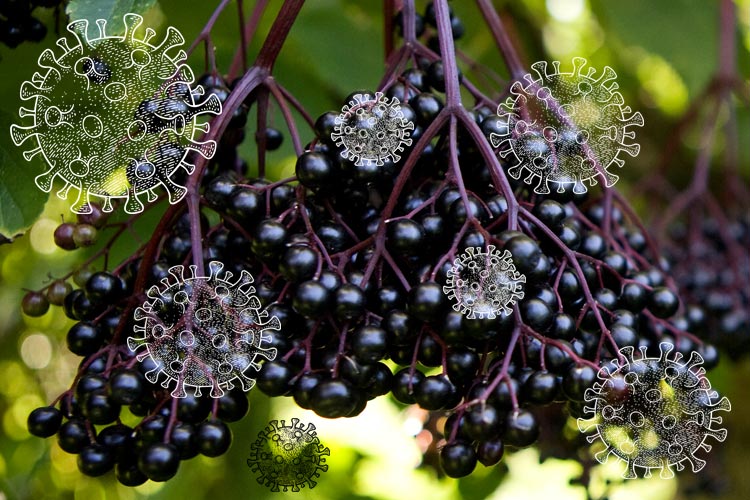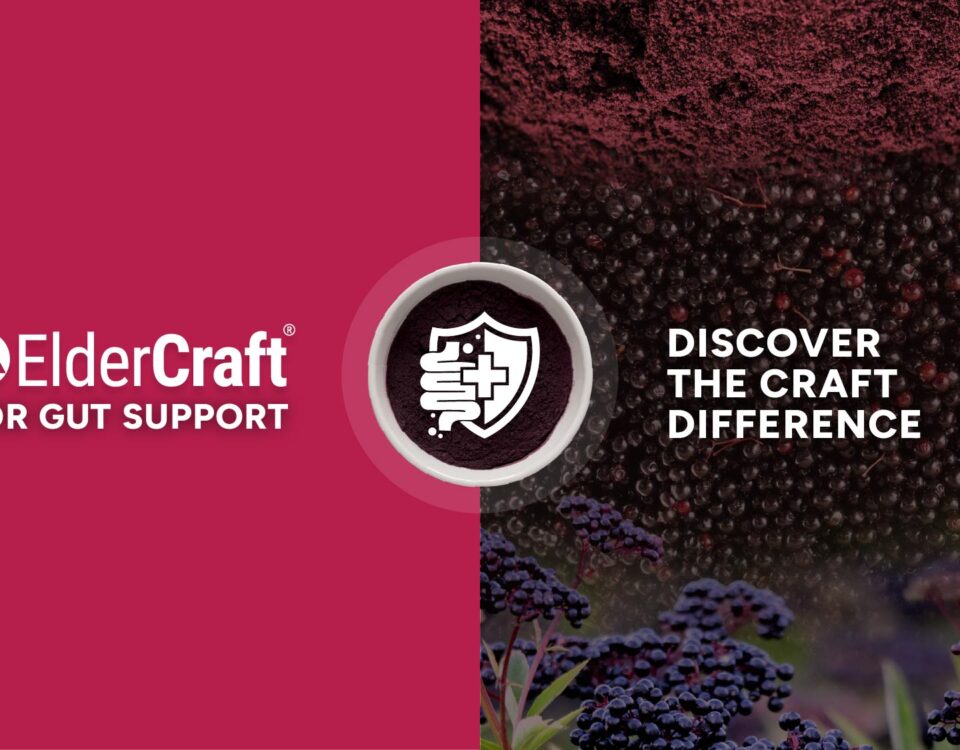A study out of Justus-Liebig University in Geissen, Germany investigated the antibacterial activity of the standardized elderberry extract on liquid-cultured strains of Streptococcus pyogenes and group C and G Streptococci, and the bacterium Branhamella catarrhalis, which often cause infections of the upper respiratory tract. An elderberry extract concentration of 10% inhibited the bacterial growth by greater than 70%, whereas a concentration of 20% inhibited growth by over 99%. In addition, the inhibitory potential of the extract on the propagation of human pathogenic H5N1-type influenza A virus isolated from a patient and an influenza B virus strain was investigated. At a low concentration that was shown to be safe to normal cells, the elderberry extract significantly inhibited the growth of both a highly pathogenic avian type A influenza virus and a slower mutating type B influenza virus. Further tests using cultures of the viruses and normal cells pre-exposed to the extract and subsequently cultured in the presence of the same dilution of extract showed that the infectivity of the viruses was reduced, as evidenced by the diminished levels of virus production by about 30% and 25% for the type A and B influenza virus, respectively. These results suggest that the extract may be blocking cell factors which allow the viruses to propagate. The researchers concluded that the elderberry extract was “active against human pathogenic bacteria as well as influenza viruses, both being clinically important groups of pathogens for which new and alternative therapeutic approaches are needed.”
Krawitz C, Mraheil MA, Stein M, Imirzalioglu C, Domann E, Pleschka S, Hain T. Inhibitory activity of a standard elderberry liquid extract against clinically-relevant human respiratory bacterial pathogens and influenza A and B viruses. BMC Complement Altern Med. 2011; 11:16.
Researchers at the Southern Research Institute, in Frederick, Maryland, found that Artemis’ standardized elderberry extract possessed anti-herpes activity, most notably against HSV-1, HSV-2 and HCMV, in vitro. It was found to contain one or more entities that prevent herpes virus replication. Herpes viruses play a role in a wide range of diseases including the typical cold sores, associated with HSV-1 infection, to more clinical syndromes involving genital infection with both HSV-1 and HSV-2. HCMV infection is associated with a number of clinically relevant diseases – such as rejection of autologous bone marrow transplants, and retinitis in immuno-compromised individuals. HCMV expression has also been implicated as a potential causative agent in prostatic carcinoma, cervical carcinoma, adenocarcinoma and Kaposi’s sarcoma.
Turpin, Jim A. 2000. Antiviral evaluations of elderberry extracts and standardized powder. Unpublished data.
Other researchers at Indiana-Purdue University in Fort Wayne, Indiana investigated the effects of Artemis’ standardized elderberry extract on virally challenged mice in vivo. First, healthy mice were injected with Artemis’ standardized elderberry extract every other day for one month. Compared to the control group, these mice demonstrated at least 1) a 2-fold increase in response to ConA stimulation (indicative of T lymphocyte respone), and 2) a 3-fold increase in response to LPS stimulation (indicative of B lymphocyte response). At the end of the month, half of each group was injected with Herpes virus (HSV-1). The berry-injected mice who were subjected to the virus demonstrated a greater response to ConA stimulation (a 3-fold increase), suggesting a more enhanced response under viral onslaught. These results suggest a very significant enhancement of immune response due to the berry extracts, and relate to an increased resistance to viral infection.
Blumenthal, E.J. 2006. Immune stimulating and antiviral implications of elderberry extract. Unpublished data.
See Appendix I for additional research supporting the anti-viral effects of high anthocyanin berry extracts.






